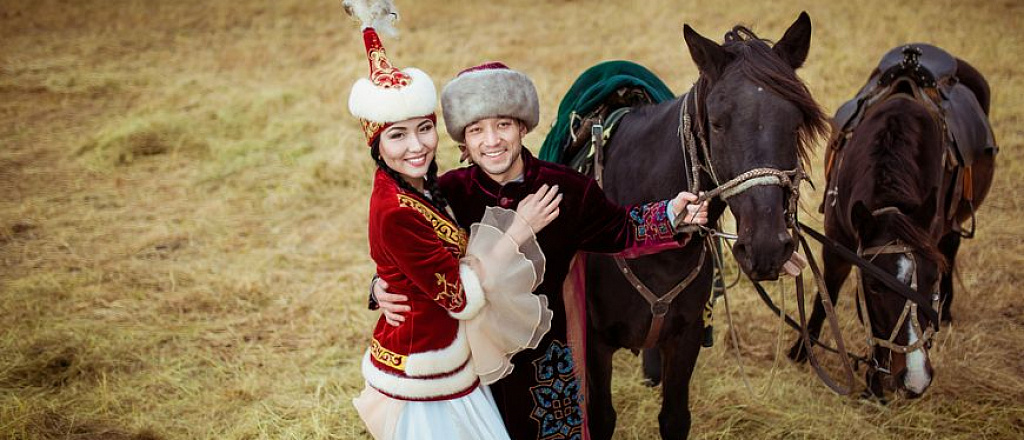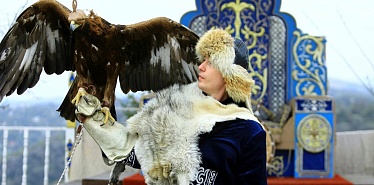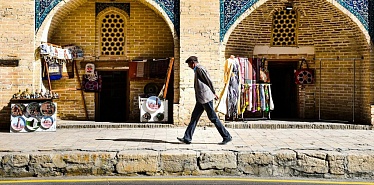Kogendik (Көгендік), keusen(кеусен), oli sybaga (өлі сыбаға), shulen taratu (шүлен тарату)
Nomads were ranching cattle mostly, although there were some Kazakhs farming and fishing. Those communities were accustomed to assistance and charity towards the poor, the families with no a breadwinner, the old, invalids, widows and orphans. Cattle breeders’ help was called kegendik, farmers’ - keusen, and fishermen’s - oli sybaga.
Shulen taratu was the tradition conducted by the rich, usually sultans, bais, batyrs and biys, and carried out before the winter. Anyone intended to help the poor assembled people and gave them cattle, money, clothes, etc.
At tergeu (Ат тергеу)
A married woman never called her in-laws by name, as it was some kind of taboo. From the very first day of staying at her husband’s, the nicknames made up for her in-laws were judged, as they had to correspond with a person. At tergeu is some kind of a mutual respect and reverence between a daughter-in-law and her husband's relatives.
Shash oru (Шаш өру)
A Kazakh maiden tended to have one braid, while after the wedding her hair was plaited in two braids which meant that her solitude had come to an end. On the eve of the marriage a bride and her friends made a farewell detour of relatives singing “synsu” (a song about a bitter maiden fate). Relatives treated her with various dishes and gave valuable gifts. Then her parents arranged a farewell party where they tore up the cloth and distributed the patches. This tradition’s called zhyrtys. The cloth was brought by a groom and given to a bride’s mother in advance.
Kogentup (Көгентүп)
A child visiting distant relatives for the first time was always given a lamb, foal or camel in honor of such a significant event. It was an original way to show respect towards a child’s parents.
Zhienkuiryk (Жиенқұйрық)
It’s a custom for the ones related by the maternal lineage. Such a person was called a “zhien”, and his/her mother’s relatives were “nagashi”. A zhien was a precious guest who could ask for anything s/he wants at nagashy’s. Zhien had 3 wishes at once.
Kulak tesu (Құлақ тесу)
Nine-year-old girls had their ears pierced with an awl or two millet grains. When the ears were healed silk threads were changed with small silver earrings with mother-of-pearl called tan. This rite meant a gender difference, there was a saying: "Kulak Tesu – kizdyn sundeti", (lit. ear piercing is a girls’ cut). Ear piercing was equated with the rite of circumcision. It was a kind of initiation confirming the gender and the age. After the ritual parents held a party.
Itkoilek (Иткөйлек)
A shirt put on the baby in the first 40 days of his/her life was called itkoilek and used for a special ritual. Sweets were wrapped in the shirt and tied on a dog’s neck. Impatiently awaiting for this moment, children rushed to catch a dog around the village and, having caught it, shared sweets among themselves. Childless women hurried to the children to change different delicacies for the itkoilek, which was believed to bring good luck and enable women to give birth.













